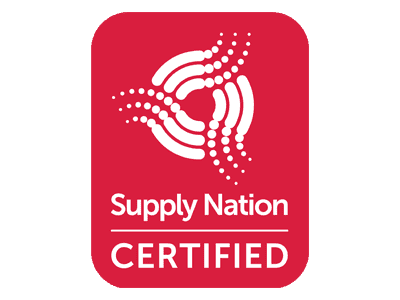
PARTNER RAINY DAY RECRUITMENT FOR YOUR NEXT ROLE IN IT
With strong Industry relationships across Australia, we are able to quickly match IT professionals to successful employers with exceptional cultures.
Our two decades of industry experience gives us a deep understanding of the industries nuances to give you the best possible chance at your ideal role.
Most importantly, we are committed to helping you find a role that much as both your personal and professional goals.
ROLES WE HIRE FOR
- Data Architect: Plans and designs the structure and integration of data across multiple platforms and systems.
- Database Administrator: Manages and maintains database systems, ensuring data integrity, security, and availability.
- Database Developer: Designs and implements database systems, including structure, storage, and retrieval mechanisms.
- Oracle Apps Consultant (Functional, Technical, Techno-Functional): Specializes in Oracle applications, providing functional, technical, or a mix of both types of solutions.
- Back-End Developer: Works on server-side software, databases, and application logic.
- Computer Programmer (Developer, Programmer, Software Developer/Programmer): Writes, tests, and maintains computer programs or software.
- Cross-platform Developer: Develops software applications that are compatible with multiple operating systems or platforms.
- Dynamics 365 Developer: Specialises in developing solutions using Microsoft Dynamics 365 software.
- Front-End Developer: Focuses on the user interface and user experience aspects of websites or web applications.
- Full-Stack Developer (Full Stack / Mean Stack Developer): Skilled in both front-end and back-end development tasks.
- Machine Learning Engineer: Designs and implements algorithms and models that enable machines to learn from data.
- Mobile App Developer (Android Developer, iOS Developer): Specialises in developing applications for mobile platforms like Android and iOS.
- Software Engineer: Designs, develops, tests, and maintains software systems or applications for computers.
- Web Developer (Web Designer / Web Developer): Builds and maintains websites, often incorporating both design and programming aspects.
- Help Desk Analyst: Provides initial point of contact for IT support.
- IT Service Delivery: Manages the delivery of IT services to an organisation.
- IT Support Specialist: Provides technical support and assistance with IT systems.
- Level 1 Support / Help Desk Technician: Handles basic IT support queries and issues.
- Level 2 Support / Technical Support Engineer: Deals with more complex IT support issues.
- Level 3 Support / Support Analyst: Handles advanced and specialised IT support tasks.
- Service Delivery Manager: Oversees and ensures the quality of IT service delivery.
- Service Desk Analyst (L1, L2, L3): Provides varying levels of IT support, depending on the level.
- Service Desk Team Leader: Leads a team providing IT support services.
- Engineering - Network (Network Analyst): Analyses network systems and recommends improvements.
- Network Administrator: Maintains and supports network systems.
- Network Architect: Plans and designs network infrastructure and solutions.
- Network Engineer: Designs, implements, and manages network infrastructure.
- Systems Administrator: Manages and supports an organisation's IT systems and servers.
- Systems Engineer: Designs and implements complex systems, often integrating hardware and software components.
- IT Project Manager: Oversees IT projects from initiation to completion.
- PMO Coordinator: Supports the project management office in its operations.
- Product Manager: Oversees the development and marketing of a product.
- Product Owner: Represents the stakeholders in a Scrum team and is responsible for maximising the value of the product.
- Program Manager: Oversees multiple related projects to achieve organisational objectives.
- Project Manager: Plans, executes, and closes projects, ensuring they meet goals and constraints.
- Scrum Master: Facilitates Scrum practices and supports the development team.
- Cyber Security Analyst: Similar to a cybersecurity specialist, focusing on analysing and preventing cyber threats.
- Cybersecurity Specialist: Focuses on protecting systems against cyber threats like hacking and malware.
- Information Security Analyst: Protects information assets by identifying and solving potential and actual security problems.
- Information Security Manager: Oversees and coordinates an organisation's information security policies and procedures.
- Network Security Engineer: Designs, implements, and manages security measures for networks.
- Penetration Tester / Ethical Hacker: Tests systems for vulnerabilities by simulating cyber attacks.
- Security Analyst: Identifies and mitigates security threats to computer systems and networks.
- Artificial Intelligence Specialist: Focuses on developing AI-driven technologies and solutions.
- Blockchain Developer: Develops and implements blockchain technologies.
- Data Analyst (Data Analyst / Data Modeler): Analyses data to extract insights and support decision-making.
- Data Scientist: Analyses and interprets complex data to aid decision-making.
- DevOps Engineer: Integrates development and operations teams to improve collaboration and productivity.
- Digital Transformation Manager: Leads the integration of digital technology into all areas of a business.
- Interaction Designer: Designs interactive digital products and experiences.
- Internet of Things (IoT) Engineer: Designs and develops systems and devices connected to the Internet of Things.
- Robotics Engineer: Designs and develops robotic systems and solutions.
- UX/UI Designer: Specializes in user experience and user interface design.
- Virtual Reality/Augmented Reality Developer: Creates applications and solutions for VR and AR technologies.
- Business Analyst: Identifies business needs and determines solutions to business problems.
- Business Systems Analyst: Analyses and designs the systems that support business processes.
- Chief Information Officer (CIO): Leads an organisation's IT strategy and operations.
- Digital Transformation Manager: Leads the integration of digital technology into all areas of a business.
- Infrastructure Project Manager: Manages projects related to IT infrastructure.
- IT Business Analyst: Focuses on analysing and improving IT processes within a business.
- IT Consultant: Advises businesses on how best to use IT to meet their objectives.
- IT Manager / IT Operations Manager: Oversees an organisation’s IT infrastructure and operations.
- Service Delivery Manager: Manages the delivery of services to customers or clients.
- Solution Architect: Designs complex IT solutions to solve business problems.
- Automation Tester: Designs and implements automated testing processes.
- Performance Tester: Tests software for speed, scalability, and stability under load.
- Quality Assurance Engineer (QA Manager / Test Manager): Oversees testing processes to ensure software quality.
- Quality Assurance (QA) Tester: Tests software for defects and quality issues.
- Software Tester: Identifies issues in software through various testing methods.
- Cloud Architect (AWS Admin/Developer/Architect, MS Azure Admin/Developer/Architect): Designs and oversees cloud computing strategies and solutions.
- Cloud Consultant: Advises on cloud computing strategies and implementations.
- Cloud Engineer: Develops and manages cloud-based systems and solutions.
- IT Auditor: Assesses and evaluates the effectiveness of an organisation’s IT systems, controls, and processes.
- IT Trainer / Technical Trainer: Provides training on IT systems and software.
- Service Now Administrator: Manages and customises the ServiceNow platform.
- Service Now Developer: Develops and customises applications on the ServiceNow platform.
- Technical Writer: Produces documentation related to IT, such as user guides and manuals.

